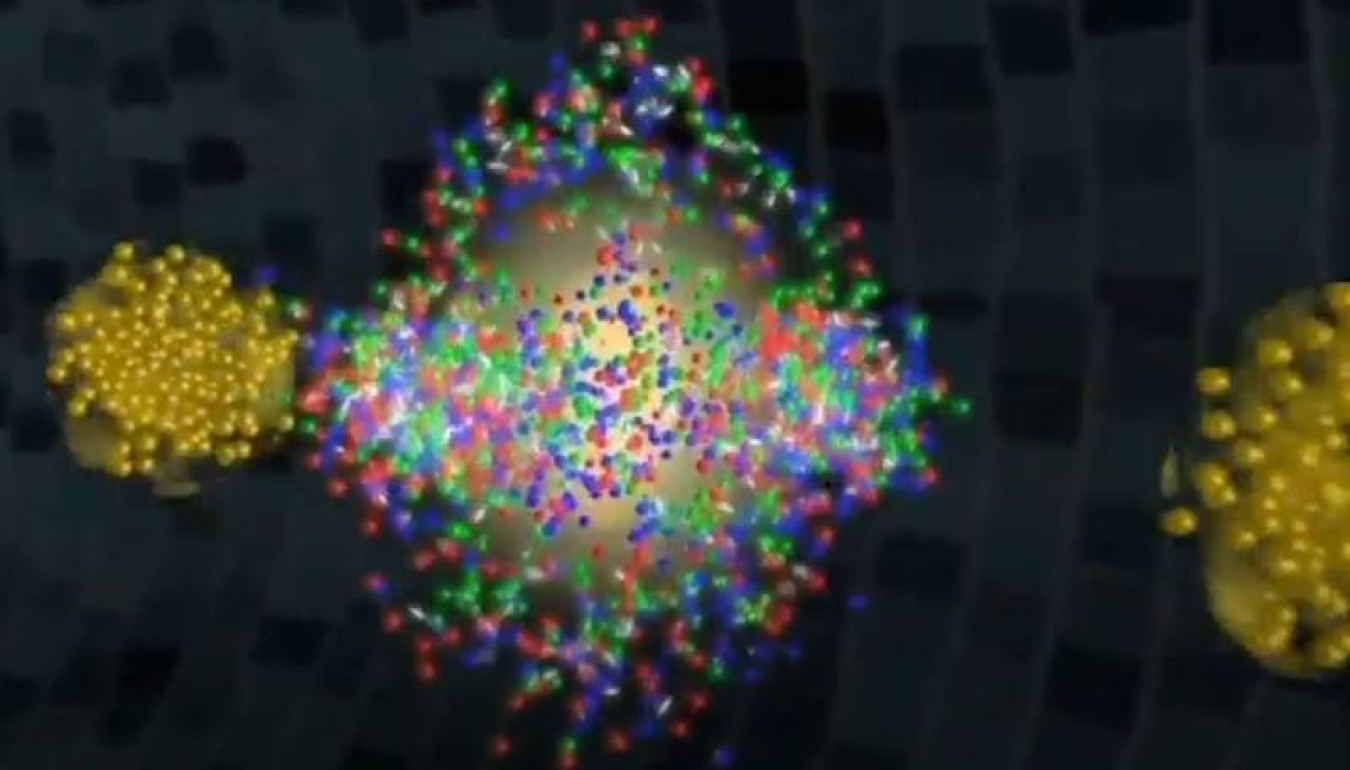
The Science
Scientists ran a comprehensive analysis of data from collisions of heavy ions (the nuclei of atoms) to determine which factors most influence fluctuations in the flow of particles. They found that the conditions that are established just as the ions collide have the greatest impact. These conditions are related to the size of the nuclei and the degree to which the collisions are off center. Later stages including the evolution of the matter created in the collisions and its transformation into other particles did not have an effect. The findings will help scientists zero in on key properties of this unique form of nuclear matter.
The Impact
The matter created in these collisions is called a quark-gluon plasma (QGP). This is a trillion-degree soup of quarks and gluons that replicates what the universe was like a microsecond after the Big Bang. Understanding its properties has been a central goal of nuclear physics. Identifying that initial-state conditions are primarily responsible for fluctuations in the flow of particles from the QGP will help physicists make more precise calculations of the plasma’s properties, including its viscosity. That, in turn, will help them understand how the collision transforms nuclei from a collection of protons and neutrons into a plasma of quarks and gluons.
Summary
Nuclear physicists study quark-gluon plasma (QGP) by colliding atomic nuclei at the Relativistic Heavy Ion Collider (RHIC). The collisions melt protons and neutrons, setting free their constituent quarks and gluons. Off-center collisions preferentially push more particles out along the reaction plane of the colliding nuclei than perpendicular to it. But the flow is not quite as smooth as that simplistic picture suggests. There are lots of fluctuations. This study by the STAR Collaboration aimed to nail down the source of those fluctuations. The scientists assessed the influence of initial state effects by looking at collisions of different size nuclei (gold-gold, uranium-uranium, and copper-gold) and how head-on vs. glancing the collisions were. They also looked at the effect of collision energy to reveal whether flow patterns were influenced by the QGP’s evolution over time. In addition, they analyzed whether the fluctuations varied among different types of particles that emerge when quarks and gluons recombine to become composite particles called hadrons.
The researchers found that the degree to which the collisions were head-on and the size of the colliding nuclei had the greatest impact on flow fluctuations. These results will help constrain key variables essential for making higher precision calculations of QGP properties such as viscosity, and for understanding phase changes in nuclear matter.
Contact
Roy Lacey
Stony Brook University
[email protected]
Lijuan Ruan
Brookhaven National Laboratory
[email protected]
Funding
This research was funded by the Department of Energy Office of Science, Nuclear Physics program, the U.S. National Science Foundation, and a range of international organizations and agencies listed in the related paper. The STAR team used computing resources at the Scientific Data and Computing Center at Brookhaven National Laboratory, the National Energy Research Scientific Computing Center (NERSC) at Lawrence Berkeley National Laboratory, and the Open Science Grid consortium.
Publications
Abdallah, M.S., et al. (STAR Collaboration), Collision-System and Beam-Energy Dependence of Anisotropic Flow Fluctuations. Physical Review Letters 129, 252301 (2022). [DOI: 10.1103/PhysRevLett.129.252301]
Related Links
What Triggers Flow Fluctuations in Heavy-Ion Collision Debris? Brookhaven Lab news release
Scraped from https://www.sourcearu.com




